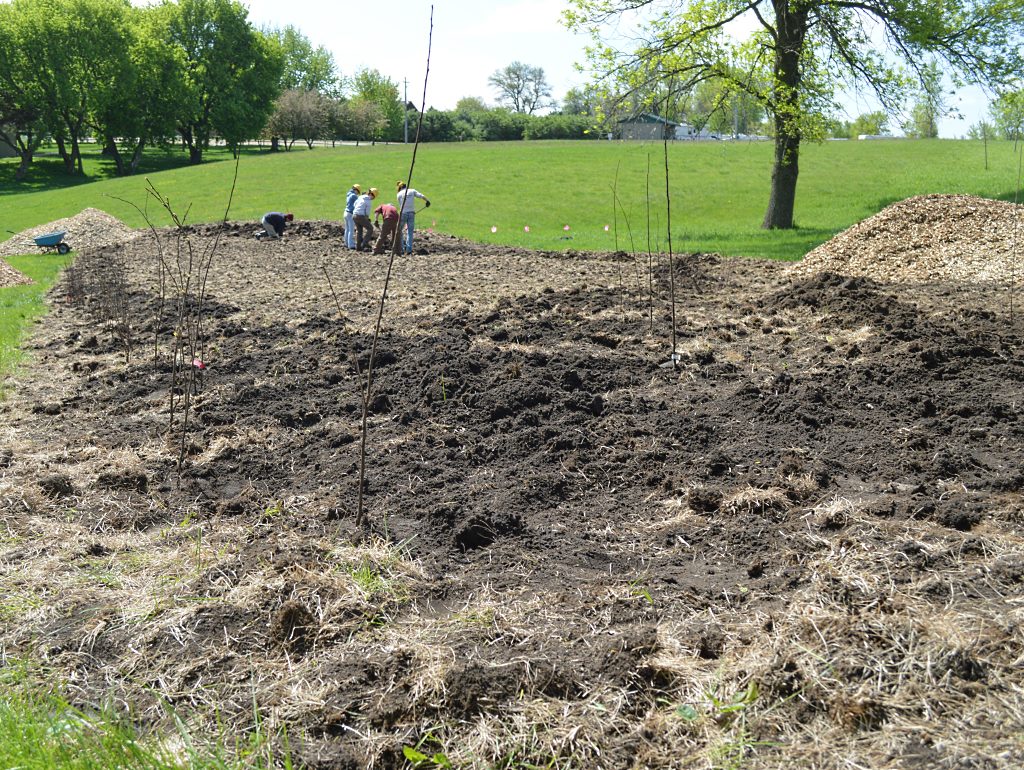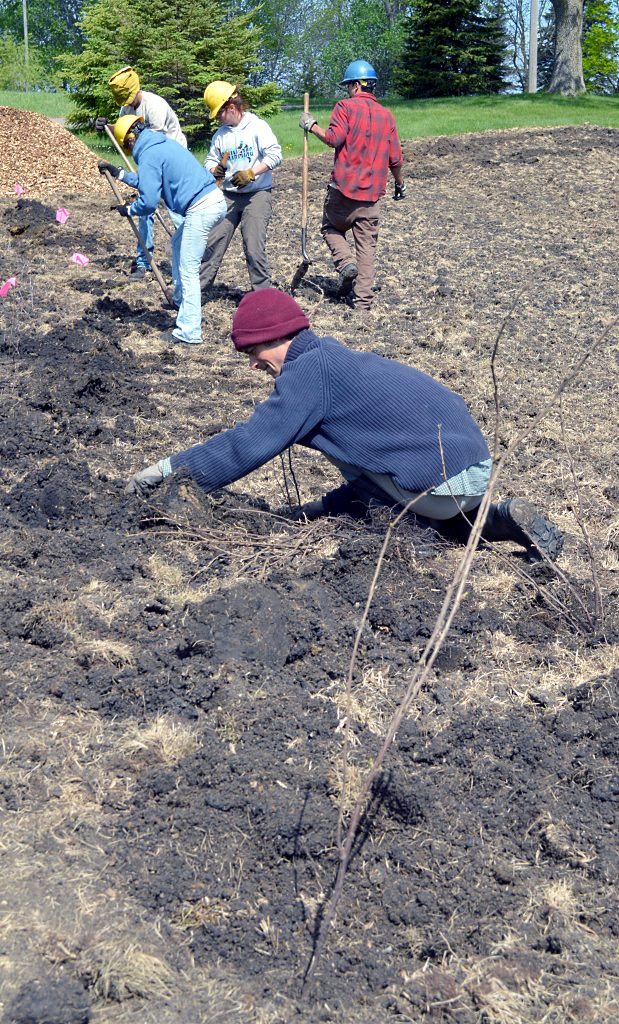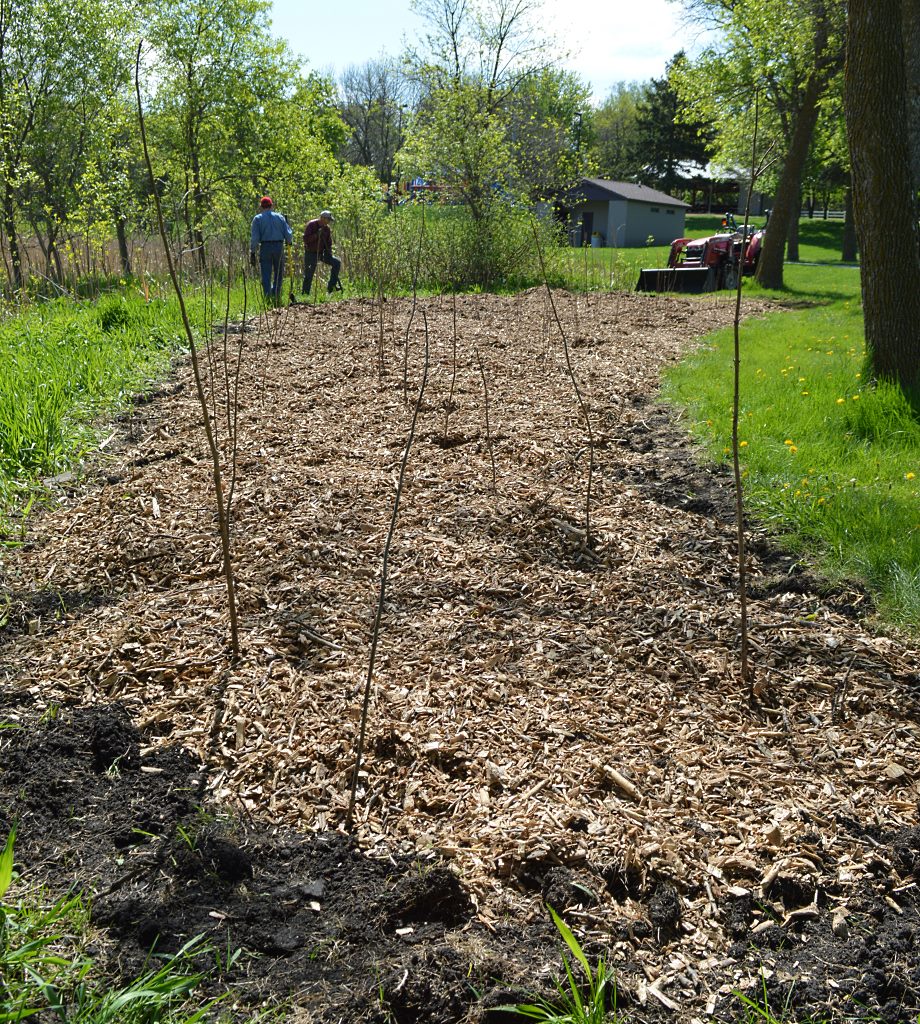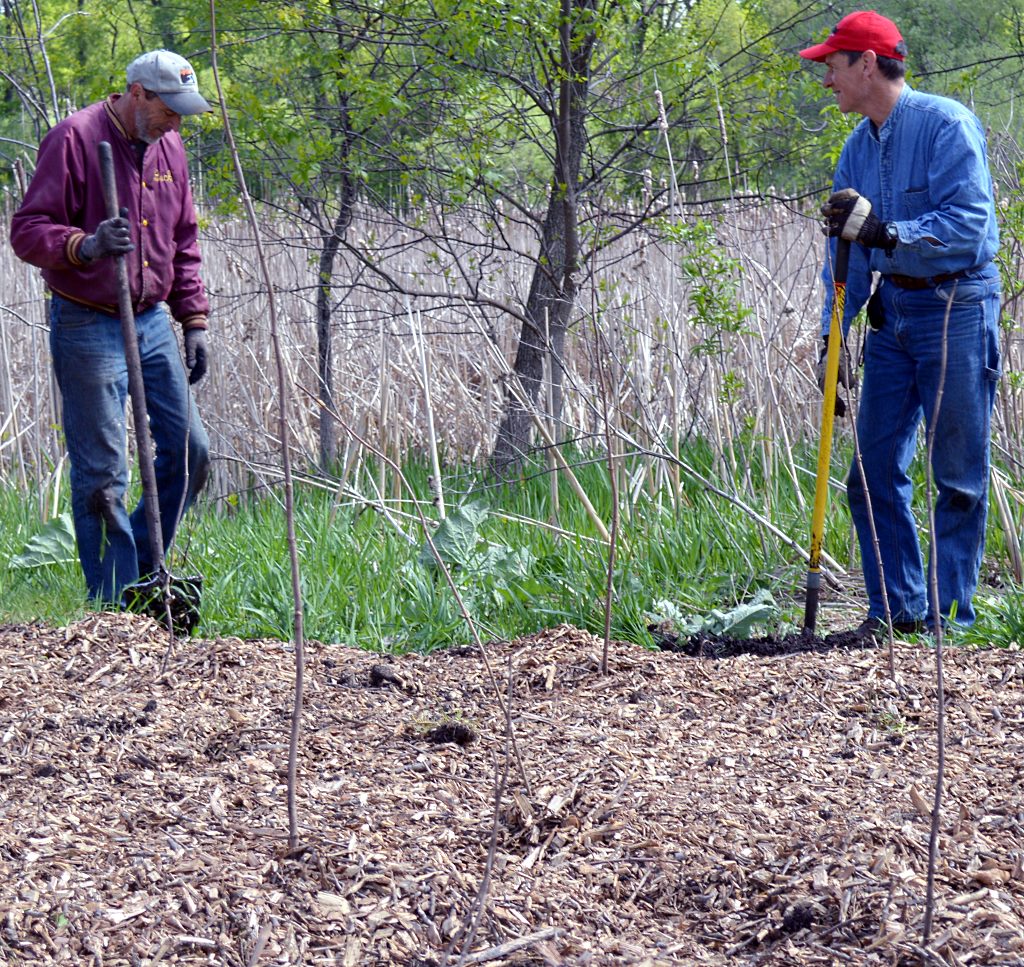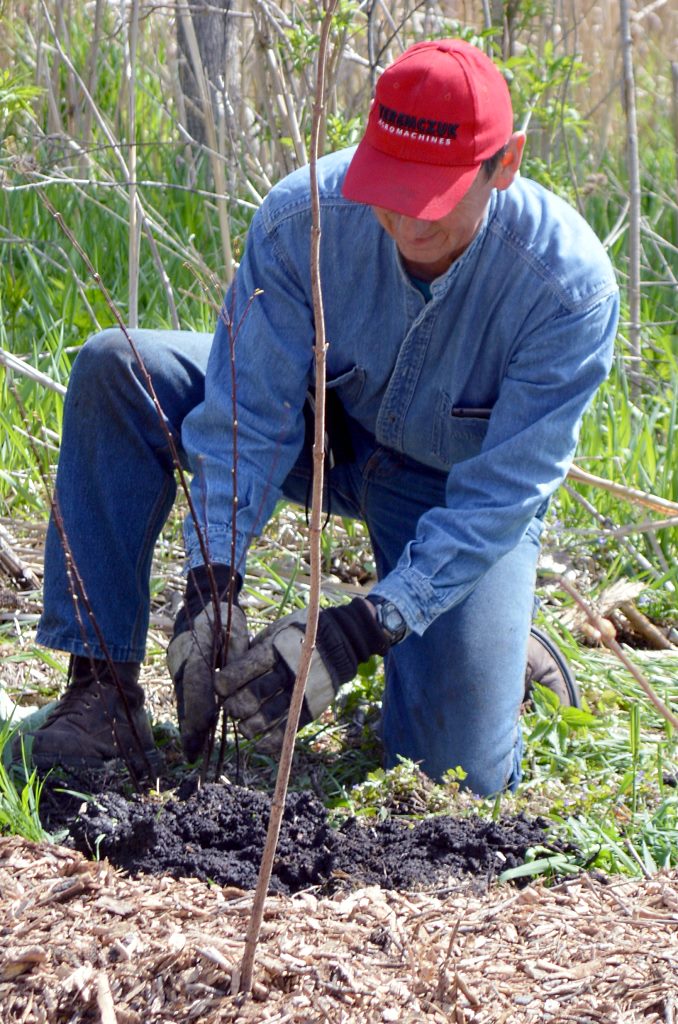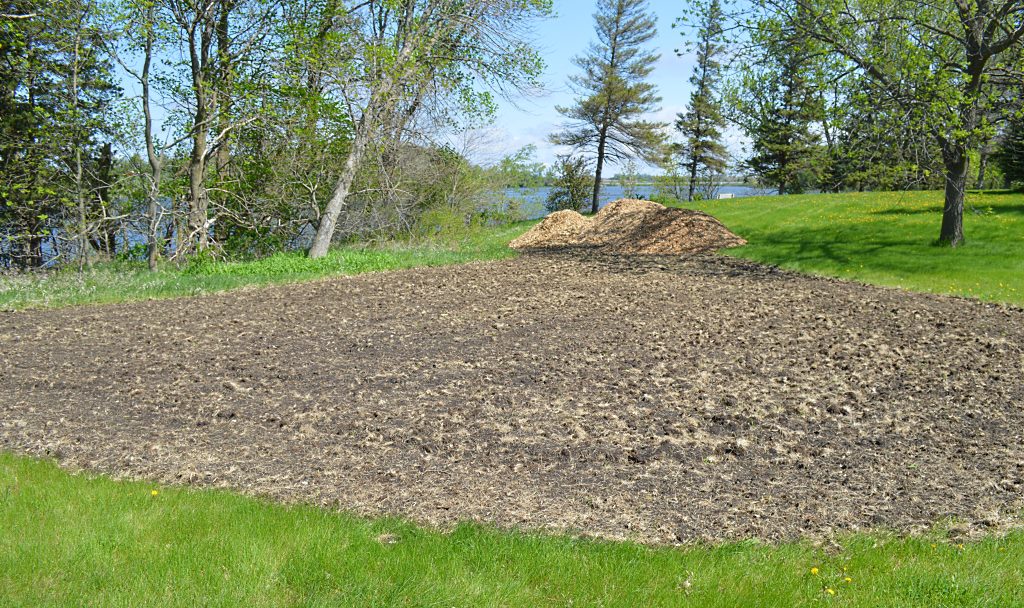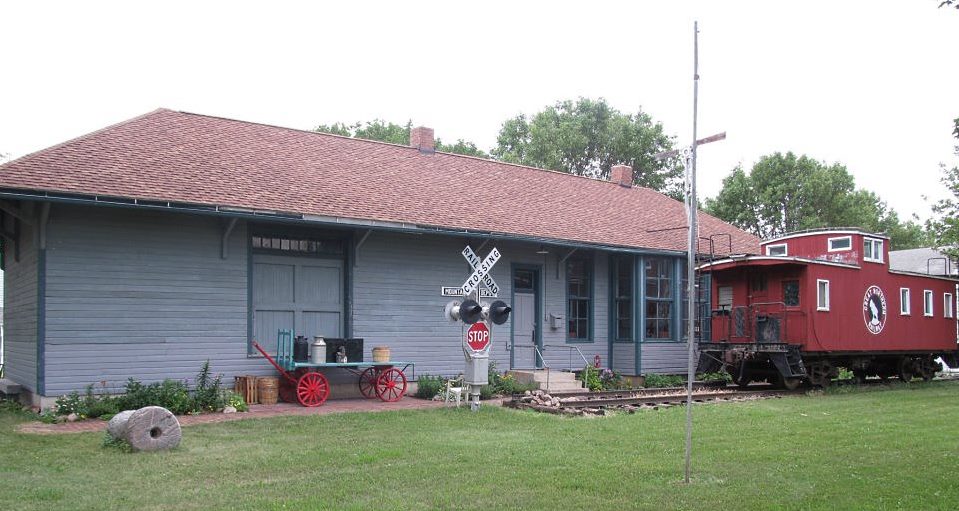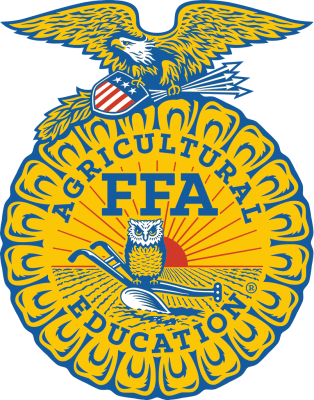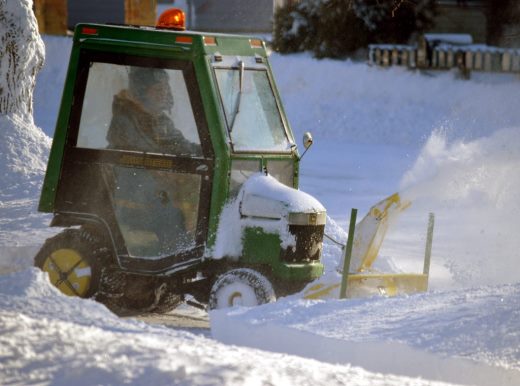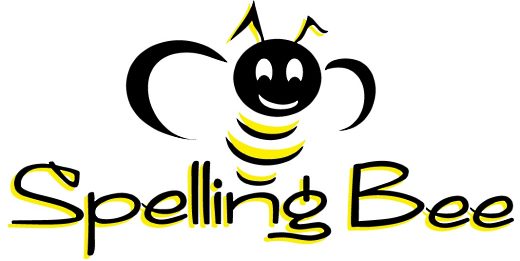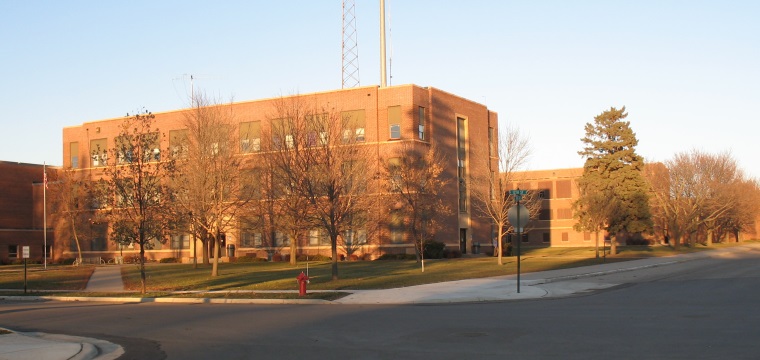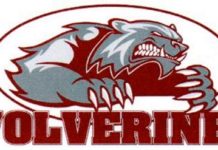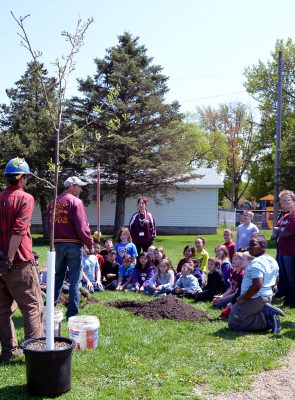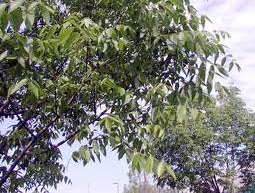Planting took place Tuesday morning at two Lawcon Park sites and one location near Heppner’s Point fishing pier
The sun broke through an overcast sky on Tuesday morning, May 12 – and conditions were perfect for “making garden” – an extreme garden at that.
In fact, the planting of 20 apple trees and 500 bushes was all part of the Mountain Lake Food Forest project. The ground was tilled in three spots around the southern area of Mountain Lake – two sites near Lawcon Park, one to its northwest and another nearer the lake by an area of cattails and a third area was planted west of the Heppner’s Point fishing pier.
Plantings were those of a food forest’s upper levels, and included fruit bushes such as raspberries, American plums, black currants (a small, glossy black fruit), elderberries (a fruit black in color), serviceberries (fruit is a dark-reddish to purple color and the flavor is sweet and juicy, like a mild blueberry, but inside are soft, almond-flavored seeds), nannyberries (a fruit blue-black in color with a sweet taste), along with crabapple trees.
Nathan Harder of Mountain Lake spearheaded the project, and was backed by other interested community members, as well as Diana Madsen of Heron Lake, a health educator connected to the Statewide Health Improvement Program (SHIP) at Des Moines Valley Health and Human Services (DVHHS). SHIP is about creating good health for parents, kids and the whole community by decreasing obesity and reducing the number of people who use tobacco and are exposed to tobacco smoke. Madsen and SHIP are working with the project to assist, via grants, in the purchase of trees, plants and signage identifying what has been planted as well as educating the public on the varieties of trees and plants.
The planting was done by Nathan Harder, along with Dr. Steve Harder, Dave Bucklin of the Cottonwood County Soil and Water Conservation District (SWCD) and four members of the Kilen Woods group from the Minnesota Conservation Corps.
Bucklin noted that there are hopes to place another Food Forest on the north side of Mountain Lake near the “island” on public property.
Food forest gardens are new to the United States. A food forest is based on an ecological model of an actual forest and features many plant layers as well.
A typical food forest includes:
* An upper layer composed of canopy trees. Trees are planted that will grow large and provide fruit or nut produce, or something else for human use. These could apple or pear fruit trees or walnut trees. Perhaps even hybrid chestnut or hazelnut trees.
* A layer of a variety of fruit trees; apple, plum, etc.
* Next are the vines – like grapes – that would climb the trunks of the medium trees.
* Below the fruit trees are planted edible shrubs, most notably berry shrubs, such as red and black currants, raspberries, gooseberries, chokecherries, seaberries, cranberries, strawberries. Selections would be made on the hardiness, the ruggedness of the variety, in order to weather Minnesota climate patterns.
* These are followed by grasses, or even flowering plants that could be herbal in nature or provide sources for pollinators, such as honey bees or maybe wild asparagus.
* The lowest level would be fungi. This is where you find edible mushrooms, such as shiitake mushrooms.
Below are photos of the plantings:
